Continuing my Japan series, we have a special visit to another one of my heroes: Yamamoto-san of Tailor Caid, the famous Japanese ivy tailoring shop. Spoiler alert, we have more in common than you might think, and that’s not just due to our love of ivy!
Introduction

Shot by Elliot Hammer for The Armoury.
Yuhei Yamamoto (known mainly by Yamamoto-san) of Tailor Caid is someone you’ve probably heard of before if you’re interested in ivy clothing, perhaps as he represents the last vestiges of period-accurate tailoring. In a world where Brooks Brothers has changed to be a shell of what it once was, Yamamoto-san works hard to create faithfully accurate bespoke creations for the vintage enthusiast (or guys who just want a different style of suit)
To me, that’s what makes him one of the best tailors in the world, as aesthetics are equal to fit. Not many people share this opinion, but it’s a sentiment that drives this blog. It’s not enough to simply have a well fitting suit; it’s about a suit with the right details for a specific look. But I digress.
**If you want to learn more about Tailor Caid, read this piece by Ivy-Style and this and this, two journal entries from The Armoury.**

Like my experience with Ethan Newton, I have to credit the Armoury (and Mark Cho) for introducing me to Yamamoto-San. While in school, staving off anxiety about my MBA, I would scroll The Armoury’s tumble endlessly; Tailor Caid naturally came on, as he was a favorite of Mark’s. You could see some of Mark’s commissions, which really brought the look into a new context, as I wasn’t too keen on the 60’s/ivy look yet.

At the time, I was only slightly breaking out of my 1930s-1940’s vintage mood. I definitely have much interest in 1960’s clothing, but that might be because I could only correlate it to Mad Men. However, seeing it on Yamamoto-san and Mark Cho brought life to the ivy look, almost as if something just clicked in my head. Sure, the garments were faithful adaptations of vintage 60’s tailoring, but they had a bit more youth thanks to the current era of it’s wearers. Maybe it’s because of the variety, from dark tweeds and somber 3PC suits to that beautiful purple-red jacket. A bit different than the navy blazers and grey flannels that you usually think of. Plus, the use of contemporary Drake’s ties, shoes, and hair also helps give the style a new context.
Soon I became an ivy adherent, scouring for vintage suits and jackets. It helps that when compared to my 1930s-40s jackets, these sack-jackets had a better place in everyday wear; that’s mainly due to the shoulder treatment. While a part of it was finding a way to repp (heh) vintage style in the modern world, it also acted as an avenue for me to develop my own personal taste in tailoring. Of course, this also made me realize that I enjoyed ivy/trad style across almost the entire board, from the 1930’s foulard approach to the 1960’s slim khakis to the 1970’s and 1980’s use of color.
All through my personal lens of course, which now has a definite Drake’s leaning.

The photographs by the Armoury and their twice-a-year trunk shows kept Tailor Caid relevant and on my radar, even though my tastes have changed slightly over the years. Nothing about Caid seemed LARP-Cosplay to me; it was simply a suit made today with vintage details. I knew that if I had a Caid suit, I would treat it like all the other vintage sack-jacket in my wardrobe, from a period-inspired to just contemporary-classic. It is definitely an aspirational piece that is just as versatile as a neapolitan sportcoat; you just need the confidence to rock it.
Perhaps thats the endearing quality of ivy/trad.

A Caid jacket with contemporary chinos, shirt, and Drake’s tie. A bit of ivy style overall though.

I mean even just by looking at it, it’s just so different than what you get at J. Press (not a fan of their shoulder) or Beams + or even Kent Shop. Caid has the gravitas of a bespoke tailor like Liverano and is presented as such, especially when compared to the latter two. Plus, there’s so much more attention to detail with Caid. As someone who has been collecting vintage for a while, I can even see the slight differences between each suit, from the lapel treatments to the button spacing.
Like today, there were a variety of different tailors and house styles doing their own spin on the traditional sack-jacket. Yamamoto-san seems to have studied them all, as is able to produce anything his client’s wish, including vintage pieces that are not ivy. It just goes to show you that there are so many details present that you can’t just call things “vintage” for the sake of a few non-contemporary details. This is evident in Mark Cho’s own commissions.

A 30s/40’s style DB.

A 30’s style suit.

Getting a bespoke Caid suit has it’s perks. One of which is the size and fit, and not all of ivy stuff I’ve found fits relatively well. You know that I’ve gotten lucky with my finds, but I’ve had to pass on quite a bit simply to do them being slightly long for my body (and yes, some classic ivy jackets tend to be on the longer side). Or in some cases, they’re cut too short (perhaps for a more mod look).
Then of course comes the details. Some vintage ivy jackets have narrow lapels, some are wider. Some have a bit of padding at the sleevehead or use a light canvas, others lack any whatsoever. All of these can make or break a look, not just in terms of desired-period but in terms of personal aesthetics. I personally find that I look best in wider lapels, as my dad bod will not be helped by a narrow lapel (which makes the body appear too prominent and boxy). Obviously, this is just the jacket and I’m just as picky with trousers.
Lastly, there is the cloth. You’d be hard pressed to find any true vintage piece that rivals the stuff we’ve seen above. Dark gun-ish check, vibrant summer blues, and that purple! Sure, vintage yields some amazing stuff as well, but then you have to consider the condition of the garments. Thankfully most of my stuff is in pretty good condition, but some feature stains and holes. Not enough to put me off wearing it, but it would be nice to get my own stains and holes on something that was made just for me.
Also it may just be me, but Caid bespoke just looks so damn good. They is probably the shoulder construction, as it looks a bit more slouchy than any of vintage garment I have. Who knew that the shoulder could make or break a jacket?

Jim Parker’s bespoke cord sack suit with pleated patch pockets and a selfbelt.

Dick Carroll’s gabardine sack suit. A perfect suit if there ever was one. And it even has a better shoulder than the original (imo).

For a while, it seemed the only way I could see Caid in person was if I happened to be in New York at the same time as Yamamoto-san’s trunk shows. It didn’t really seem possible, considering my work schedule. I did happen to see Ben Levy, an Armoury alum, wear his Caid jacket during my first trip to NYC.
Unlike most people, Yamamoto-san doesn’t use social media very much (which if you compare him to some other, small tailors, isn’t a big surprise). It was very entertaining to see him appear on other people’s Instagrams, whether doing work with Mark Cho or sightseeing with Dick Carroll. All of this added to a slight aura of mystery, which made me want a chance to meet Yamamoto-san even more. To my amazement, his empty instagram followed mine a while back and according to a few friends in Japan, so it was clear he at least knew about me!
Because a visit to Tailor Caid was a must-have, on par with meeting Ethan Newton of Bryceland’s, I did everything I could to make it happen, even if it meant stretching my self thin. I originally planning on doing it on a Monday, but Kousuke, who calls Yamamoto-san a father figure, made sure to tell me that he was closed on that day! In the end, I was able to meet Yamamoto-san on a day when he was free, after nearly an hour train ride from Skytree to Shibuya and a 15 minute walk through the neighborhood.
Completely worth it.
The Tailor CAID Shop in Shibuya
On the second floor of a building in the residential part of Shibuya is Yamamoto-san’s shop, Tailor Caid. Right outside the door was his famous sign (made by one of his friends) that displays a silhouette of a 1960’s man and his motto: “We are not fashion snobs, but we know a few simple rules.” A good mantra to have.
I was greeted by Yamamoto-san and his wife Junko, who immediately ushered me to the “coldest seat” at the client table and gave me copious amounts of water . After walking all day and holding my tote bag, I’m sure I looked sweaty as hell, smiling through the exhaustion.
Junko-san translated some of my conversation with Yamamoto-san, but for the most part we were able to communicate just fine! It’s always hard for me to talk to some of my icons, not just out of nervousness but because I feel that I come off as an interviewer rather than as a friend or colleague. They didn’t seem to mind, as I was genuinely curious about his business.
The couple tells me that he had always liked vintage clothing, movies, and jazz. Even though he’s most known for his 1960’s-ivy/trad style, he actually started out interesting in swing music and 1930s-1940’s cut suits (sound familiar??). Eventually he moved on to more “modern jazz” like Miles Davis and as a result, his style went forward as well. Soon he was hooked on ivy!
Yamamoto-san had already worked as a tailor, but his collection of films, illustrations, and magazines helped him discern the differences between eras, similar to how I used tumblr and friendships with vintage collectors/sellers (like Benny Reese) to figure that out myself. He gleefully showed me a few images from his library, which instantly reminds me of the countless inspiration albums that I have curated on imgur.
He eventually started Tailor Caid as a way to get things made that he couldn’t find as vintage. Obviously condition is one thing, but the details definitely matter. What if you wanted a sack-jacket in a blazer fabric but had a hankering for patch pockets (without the flap)? Or even a linen sack suit (and we all know that vintage summer tailoring seldom survives the passage of time unscathed)?
It’s hard to pick vintage tailoring once you’re picky. Yamamoto-san knew what he wanted and he knew he could make it, not just for himself but for the other ivy enthusiasts in Japan.
As you can see, his atelier is part tailorshop and part museum, housing so many of collectibles ranging from the aforementioned magazines and illustrations to screen gabs, records, and even toys. If a shrine exists to classic tailoring, it is here at Tailor Caid.
In fact, it’s so popular that enthusiasts regularly see and hang out with him in the store! It was certainly a shame that I couldn’t meet a few of his regulars, like Fairfax, Louis, Kousuke, or even other vintage enthusiasts like Takahiro.
Our conversation moves to his house style, which is a classic 3-roll-2 sack suit. The lapels are a happy medium, going in between the slim mod ones and the the wider models from the late 50s or the 70s. While it is clear that his favorite style is ivy/trad, he remind me that he can make anything (which we will soon see).
Interestingly, Yamamoto-san tells me that his clients include businessmen. I think about it for a bit, but it makes sense; Tailor Caid’s style represents the style that took Japan by storm in the 1960’s and it’s effect is clearly presented in both the stores and streetstyle. In fact, it’s so similar to the jackets I saw at Beams +, just infinity better in terms of construction, cloth, and details. Such a huge contrast to the States, where wearing a sack suit would be an oddity. The two button, vaguely english suit still reigns supreme here.

The Newport Blazer, the 60’s take on the 4×2 DB.
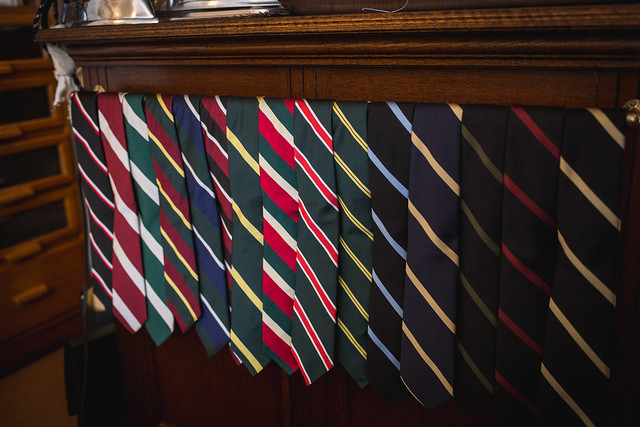
Great repps, presumably made by Fairfax.
Yamamoto-san really does take pride in being able to do anything, from suits to shirts. You can see that in the collar and cuff choices. I’m especially intrigued by the the point, button down collar on the top-right. I think I’ve only seen this particular non-rolling style in 1930’s pictures or illustrations. You might also see his spearpoint (called a tennis collar) on the middle-left.
He tells me that the club-tab collar is his favorite!
Yamamoto-san’s favorite fabrics will always be hearty flannels and tweeds, because they are hardwearing. He tells me that this is the only way to get a suit from him, as his tailoring isn’t appropriate for superfine, silky fabrics. I expect that like me, Yamamoto-san wants to be be able to live in his suits, which can only be done with more robust fabrics (don’t worry linen and cotton drill is fine for summer).
In addition to memorizing his favorite cloths from the mills he works with, he also has been keen on stocking up on vintage fabrics, which range from classic worsteds and houndstooth tweeds to colorful madras. The bolts are scattered all around the shop, laid neatly near the orders ready to be picked up or sandwiched between magazines in his library.

A brown jacket inspired by Bullitt, a popular commission.
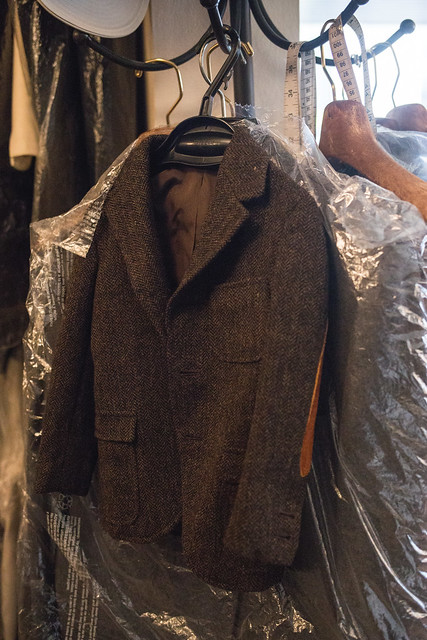
Adorable!
Before I leave, I make sure to ask him what his interests are outside of menswear. He tells me that he and his wife still enjoy jazz and in fact, he plays the saxophone! I laugh, as I tell him I do too (the alto, he the tenor), masking the fact that I didn’t say that I stopped shortly before high school. He says jazz is what brought him and wife together and that he continues to play the sax in a jazz band during the evenings.
Other than that, Yamamoto-san is an avid cyclist, who has a beautiful bike and probably, the coolest (if not most menswear) biking suit. Just check out those brands!
Caid Tailoring

I didn’t even have to ask Yamamoto-san if I could try on his work; he happily started bringing out garments for me to put on. He most likely sized me up as soon as I walked in (a common skill among menswear enthusiasts) and handed me things that were roughly in my size. Again, Japan’s citizenry are on the smaller side, so I wasn’t suprised that I had quite a few that I could actually try on!
As if to emphasize his tailoring versatility, the first jacket I tried on was in 1930’s cut. This is evident not only in the wide, horizontal peak lapels but the extended shoulder, draped chest, nipped waist, and short jacket length. All commonalities in a 30s suit, especially when you compare it to an original.
I wish I had taken a picture of the full suit, as it had nearly 10″ diameter legs and a DB waistcoat. Very 30’s indeed. 
I don’t think I’ve ever seen a more perfect jacket. Made of hearty cashmere camelhair fabric, this blazer (with accompanying brass buttons) is probably the best indication of Caid’s house style and ivy/trad in general. It looks almost exactly to some of the prized sack-jackets touted by some of my fellow ivy enthusiasts. The only difference is that this is in perfect condition with a bespoke fit.

A slightly large jacket in grey flannel.

Newport blazer looks damn good.

Tweed coat.

Cotton raincoat!

Linen!
Lastly, we have a pretty modern Tailor Caid jacket. We both talk about how it’s mainly Italian (specifically Neapolitan) inspired, but there are a few vestiges of vintage to be found. To us aestheticians, the nipped waist, sleevehead, and curved quarters are reminiscent of 1930’s style. In fact, this blend of styles is what gave way to the Model 99, an bespoke house style exclusive to the Armoury.
Yamamoto-san
I can’t tell you how long I’ve wanted to photograph and write about Yamamoto-san’s attire. I like to think that he dressed up just for me, but who am I kidding; all of us tend to dress up just for the hell of it!
His suit marks the perfect use of bespoke ivy tailoring. You’d be hard pressed to find a linen sack-suit, let alone one that fits perfectly. Like I said before, vintage summer suits seldom survive the test of time, and ones that do are either stained, contain holes, or just aren’t our size. There’s a reason why most of my vintage jackets are tweed or flannel!
So when you’re a bespoke tailor who knows how to do every vintage detail, nothing is off limits. Yamamoto-san wears an immaculate cream linen sack-suit, which is all I could ever want. The jacket features a patch breast pocket and patch-flap hip pockets, a combination that can never go wrong when wanting a sporty vibe. The trousers are slightly full but are flat front, in keeping with the ivy-trad aesthetic.
Black knit ties (especially ones with a great weave) are truly versatile and he makes plenty use of his (which feature his Tailor Caid label). In this close up, you can see a few more details like the Milanese lapel buttonhole and the slightly upward curved breast pocket, which features a vintage silk pocket square. I love the olive-brown print, as it contrasts well against the cream/white of the outfit.
Don’t forget to check out his tab collar shirt, which has a soft-square edge instead of the rounded points of the more common club. A subtle detail that makes all the difference!
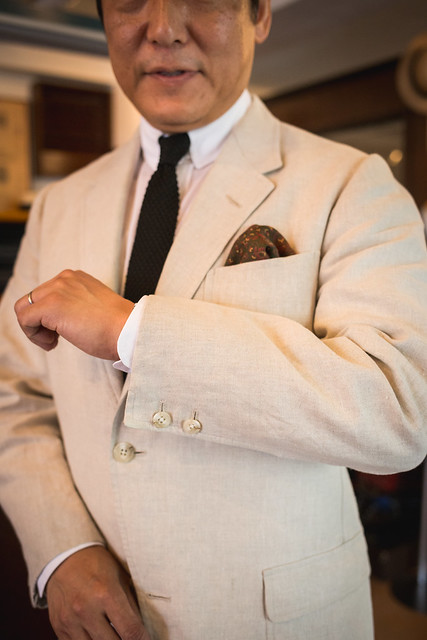
The two button ivy cuff is a must!
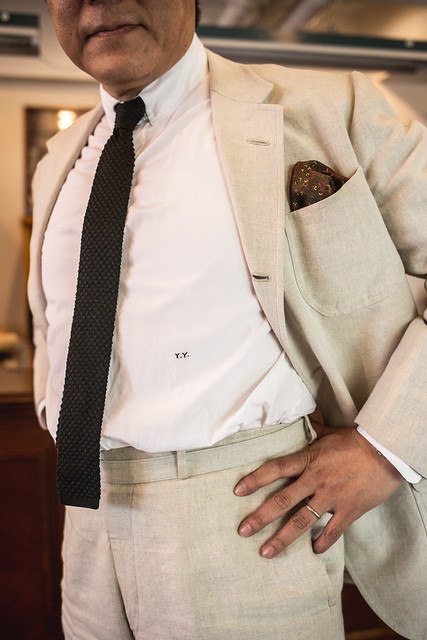
YY for Yuhei Yamamoto. Also check out that Milanese buttonhole!
Oh boy, a self belt? You seldom see these anymore unless you’ve gotten lucky picking vintage or you’ve commissioned a pair of Pomella Napoli trousers. It’s definitely an interesting detail that combines the streamlined nature of side tabs with the simple utility of having a belt.
This is a major reason for bespoke: to have details you literally can’t find on a garment that is customized by you alone. Not only are vintage linen sack suits impossible to find, but they almost never have a self belt.

Off center button.

He matches the rug!
Conclusion

Meeting Yamamoto-san and seeing the beauty of Tailor Caid in person really was a dream come true. Like I said, for me, tailoring isn’t just about the best fit, it’s about the details. And not just any details, it’s the vintage details. I initially thought that Tailor Caid was only about trad-ivy clothing, but i was dead wrong! As you can see in the pictures, Yamamoto-san is an extremely adept tailor that is able to produce anything, from a 1960’s trad look to the 1930’s drape to something that seems to have come straight from Naples last week.
Ultimately, it this adherence to detail that makes me enjoy his tailoring and makes appreciate the Japanese’s unique approach to menswear. They may not have the heritage or long history like Brooks Brothers or Rubinacci, but they are faithful to the details. I think that Yamamoto-san is a living embodiment of this. He is literally learned all of these vintage details through a deep appreciation of the vintage style/film/music and has painstakingly reflected it in his garments. And as we can see in his Italian-inspired suits, the attention to detail isn’t always limited to era.
As a guy who has no real connection to vintage other than a simple pursuit of specific aesthetics and details, I love that. All of these things together brings new life to an older style that goes largely unworn in the greater world. If you have to question whether vintage-inspired ivy-trad has a place the modern world, you just have to look at Yamamoto-san and Tailor Caid.
I guess at some point, I’m going to have to commission a bespoke suit from him. And then wear it when he and I play the saxophone together.
Always a pleasure,

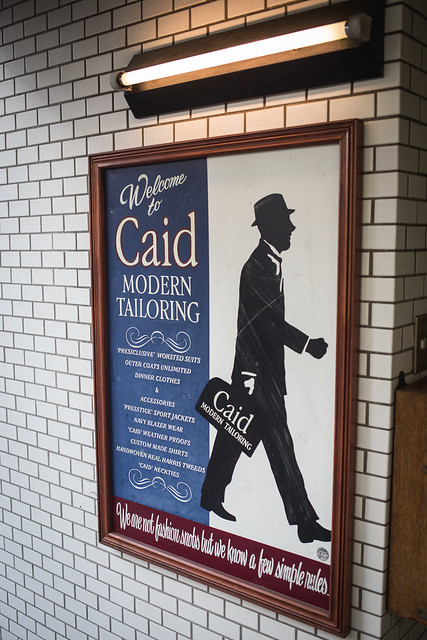
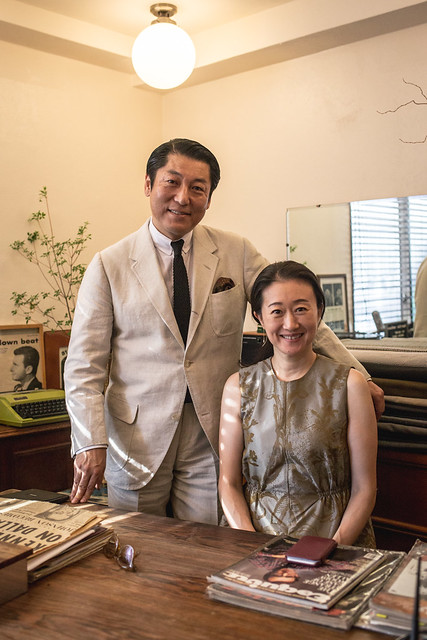


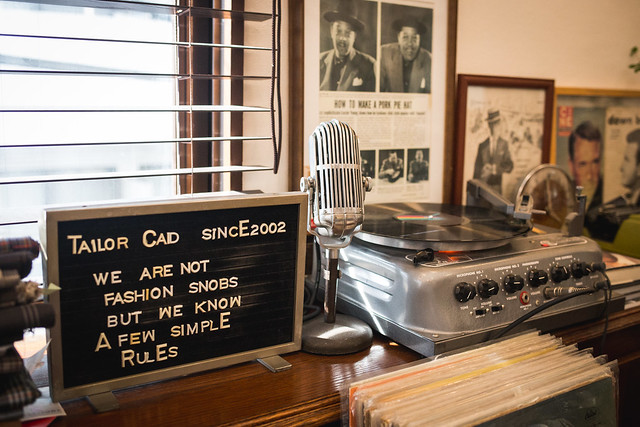
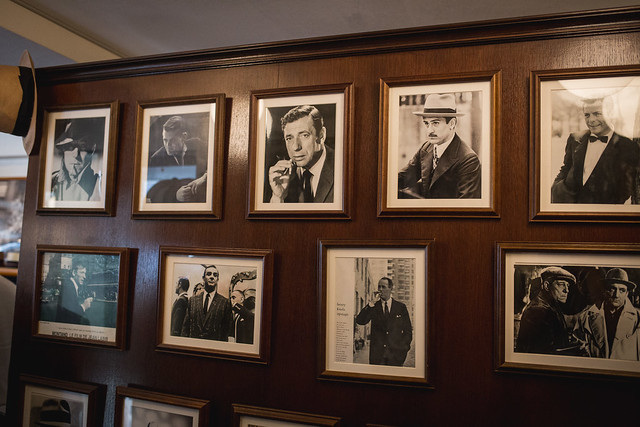
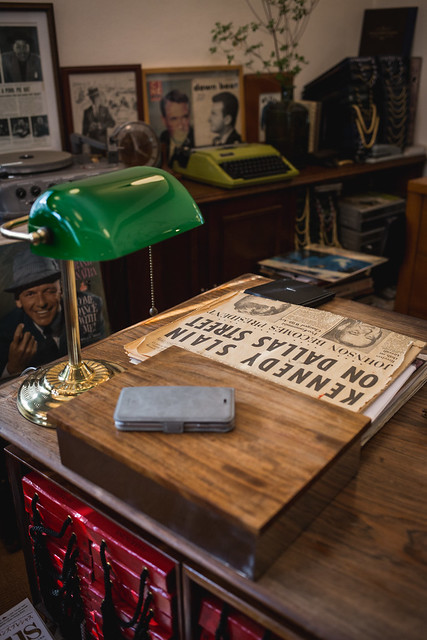

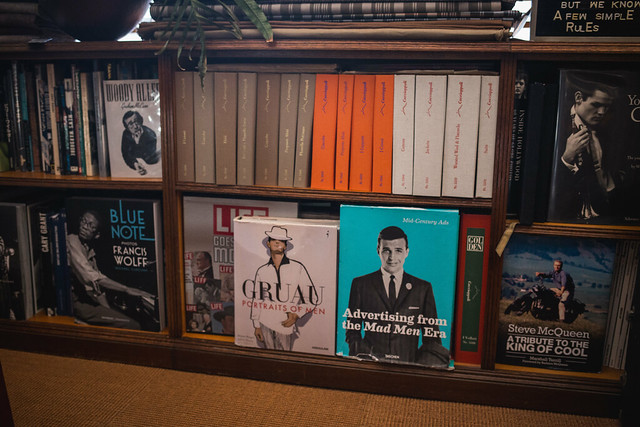

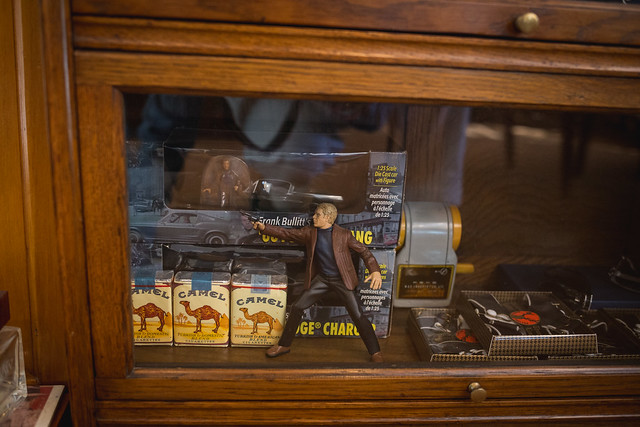







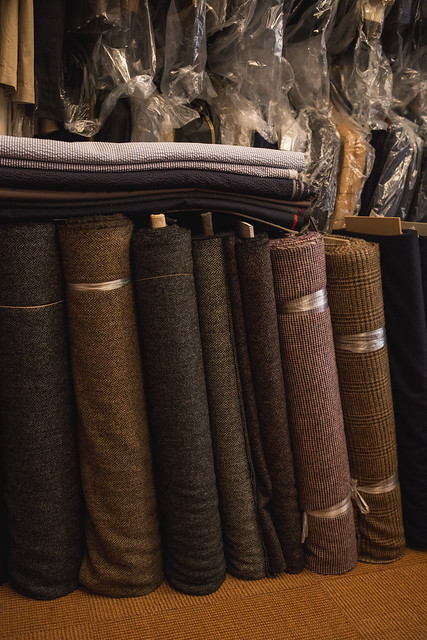


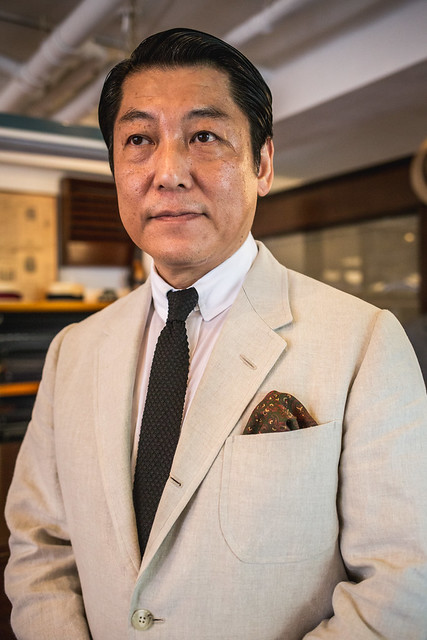
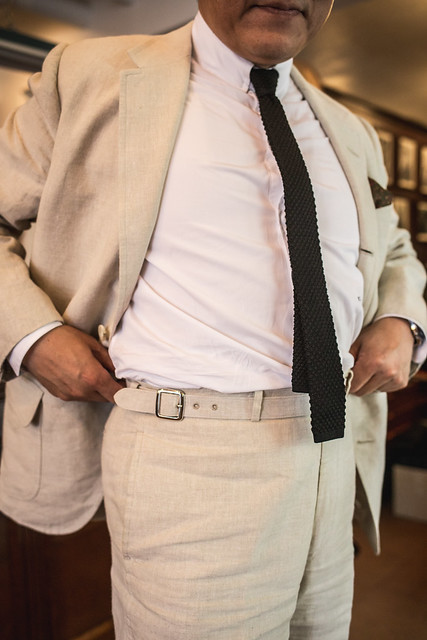
Great coverage of the man the myth and the legend Yamamoto-san!
LikeLike
Thank you for reading Dan! 🙂
LikeLike
I Love this Ethan! Thank you so very much for sharing this! The man is rather elusive as regards his online/public persona/profile, as you noted. I enjoyed the window into this man and the “why” behind the preeminent “what” that is him, and his many accomplishments. The photographs of his exceptional craft are greatly appreciated! I was not previously aware that he also had an affinity for Golden Era tailoring and music (that always seems to be how it begins, aye?)
But I digress, in a series of digressions. Thanks again! 🙂
LikeLike
One other comment; those blunted tab collars are a essentially a recreation of the old Brooks Brothers English Tab Collar shirt for which they were right famous. Sadly, that style is no longer available (as so much else there is no longer available) off the rack, though thankfully it is available as a MTM style. It is supreme made up in plain colored end on end Madras or as a university stripe shirt in pinpoint Oxford cloth. I have several and obsessively hunt them out.
LikeLike